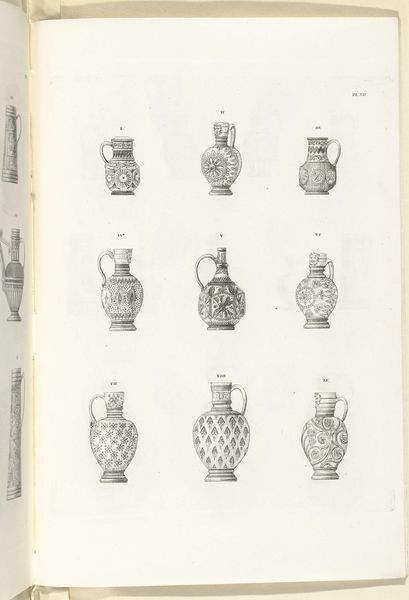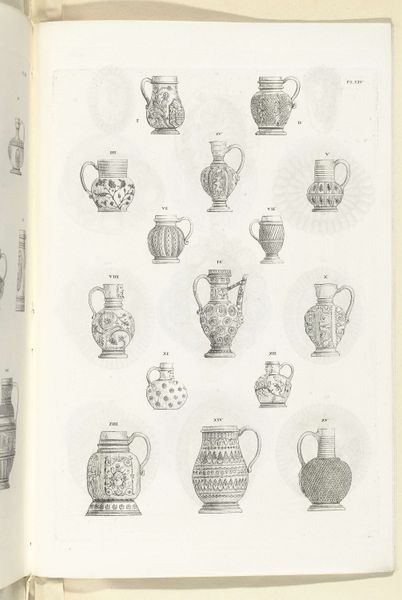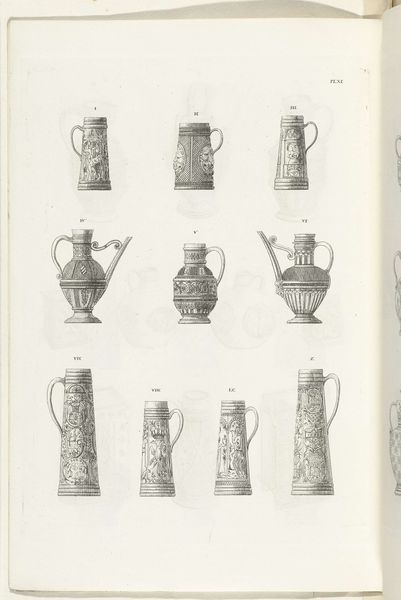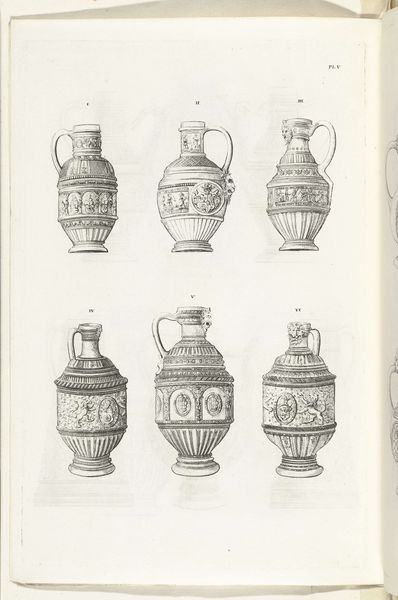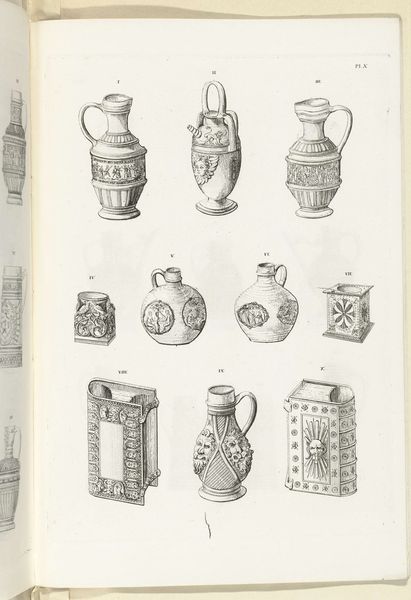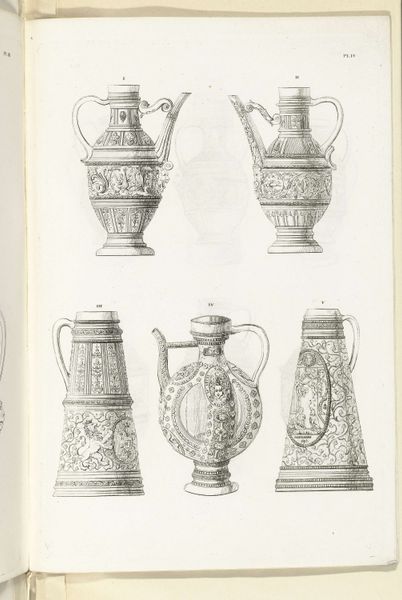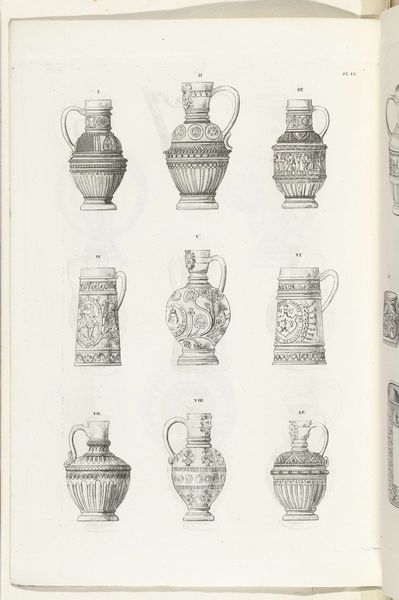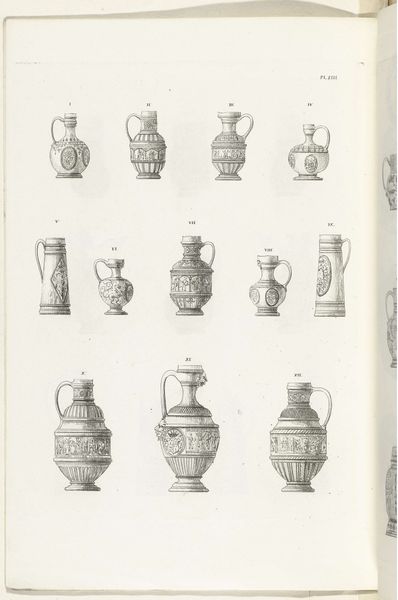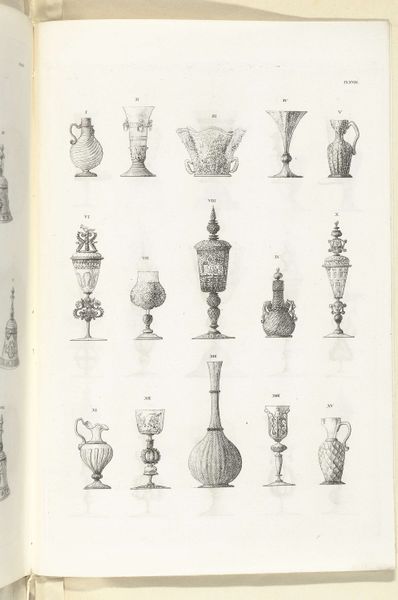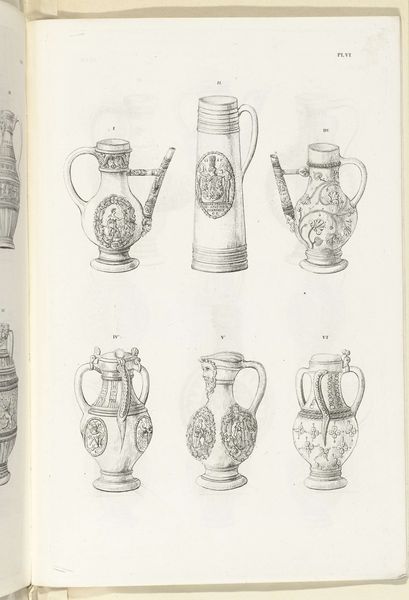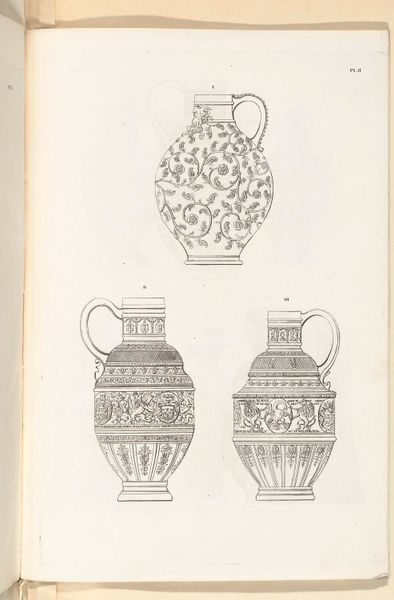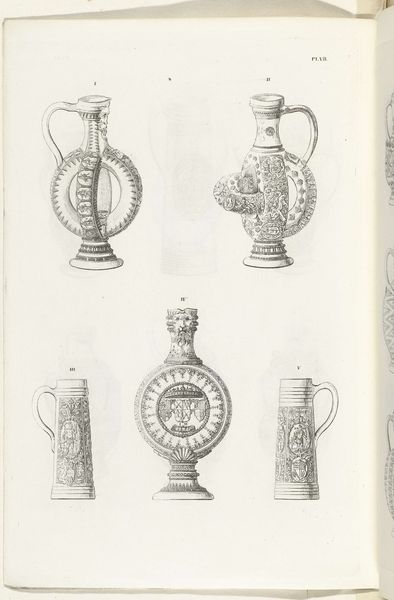
drawing, print, etching, ink
#
drawing
# print
#
etching
#
ink
#
geometric
Dimensions: height 230 mm, width 162 mm
Copyright: Rijks Museum: Open Domain
Editor: This is "Kannen van steengoed, plaat VIII," made sometime between 1827 and 1829 by Charles Onghena. It's an etching made with ink. I'm struck by how different all the jugs are; they feel like portraits of individual characters. What do you see in this image? Curator: I see a deliberate echo of cultural memory. Consider the forms themselves. These aren’t merely functional jugs; they evoke earlier, perhaps even classical, vessels. See how the artist borrows from different traditions, creating a tapestry of cultural symbolism? Each geometric pattern, each slight variation in form, carries weight. Editor: So you're saying the shapes and designs aren't just decorative? Curator: Precisely. The act of depicting these jugs becomes a study in continuity. Onghena, perhaps unconsciously, links his present to a layered past. How might these forms have functioned within different societies, or within social rituals across Europe at this time? Editor: It’s like he's thinking about the journey of a jug through time. And I notice some of the designs feel familiar, almost like family crests. Curator: Consider what each jug represents: abundance, sustenance, hospitality. Each element—shape, size, decoration—adds nuance. Onghena prompts us to consider the vessels that shape our daily rituals and social gatherings. Editor: It makes you wonder about the original stoneware and who would have used these! I'll never look at a jug the same way again. Curator: Exactly! Onghena invites us to become archaeologists of our own visual culture. We've activated history here!
Comments
No comments
Be the first to comment and join the conversation on the ultimate creative platform.
